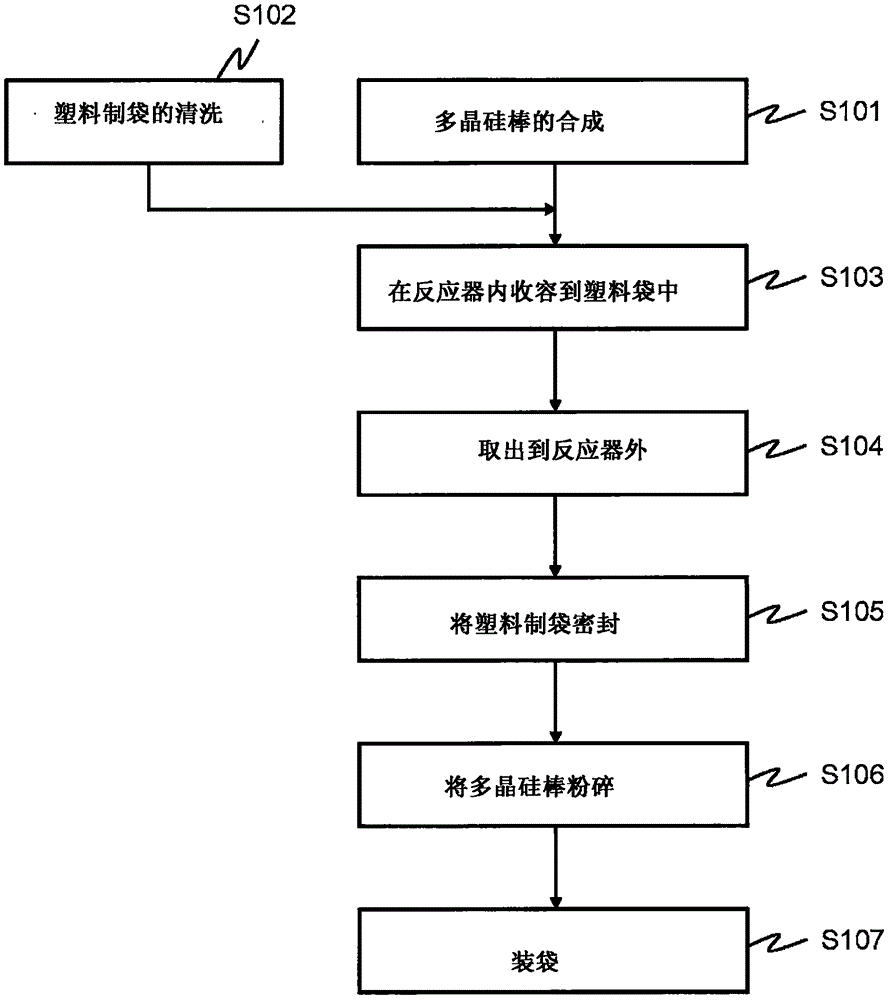Method for producing polycrystalline silicon rod, polycrystalline silicon rod, and polycrystalline silicon mass
一种多晶硅棒、制造方法的技术,应用在多晶材料生长、化学仪器和方法、晶体生长等方向,能够解决结晶线消失、难除去、紊乱等问题,达到实现制造工序、金属污染水平降低的效果
- Summary
- Abstract
- Description
- Claims
- Application Information
AI Technical Summary
Problems solved by technology
Method used
Image
Examples
Embodiment
[0053] figure 1 is a flowchart for explaining the process of this embodiment. First, a U-shaped silicon polycrystalline rod with a thickness of 130 to 150 mm and a length of 1800 to 2200 mm is synthesized by the Siemens method ( S101 ). The inner surface of the 500 μm thick LLDPE bag is carefully cleaned with 0.5% by weight nitric acid aqueous solution or 10% by weight hydrochloric acid aqueous solution, and then, after repeated cleaning with ultrapure water several times, it is used in a clean room of class 1000. It is dried (S102).
[0054] For Examples 2-4 (E2-4), after covering the cleaned LLDPE bag from the top of the silicon polycrystalline rod in the reactor and storing the silicon polycrystalline rod (S103), the silicon polycrystalline rod is taken out to the reaction chamber. Outside the device (S104), heat seal the lower part of the rod so that it does not protrude from the LLDPE bag, and store it in an airtight state (S105).
[0055] In Example 1 (E1), the silico...
PUM
| Property | Measurement | Unit |
|---|---|---|
| freezing point | aaaaa | aaaaa |
| diameter | aaaaa | aaaaa |
| length | aaaaa | aaaaa |
Abstract
Description
Claims
Application Information
 Login to View More
Login to View More - R&D
- Intellectual Property
- Life Sciences
- Materials
- Tech Scout
- Unparalleled Data Quality
- Higher Quality Content
- 60% Fewer Hallucinations
Browse by: Latest US Patents, China's latest patents, Technical Efficacy Thesaurus, Application Domain, Technology Topic, Popular Technical Reports.
© 2025 PatSnap. All rights reserved.Legal|Privacy policy|Modern Slavery Act Transparency Statement|Sitemap|About US| Contact US: help@patsnap.com

